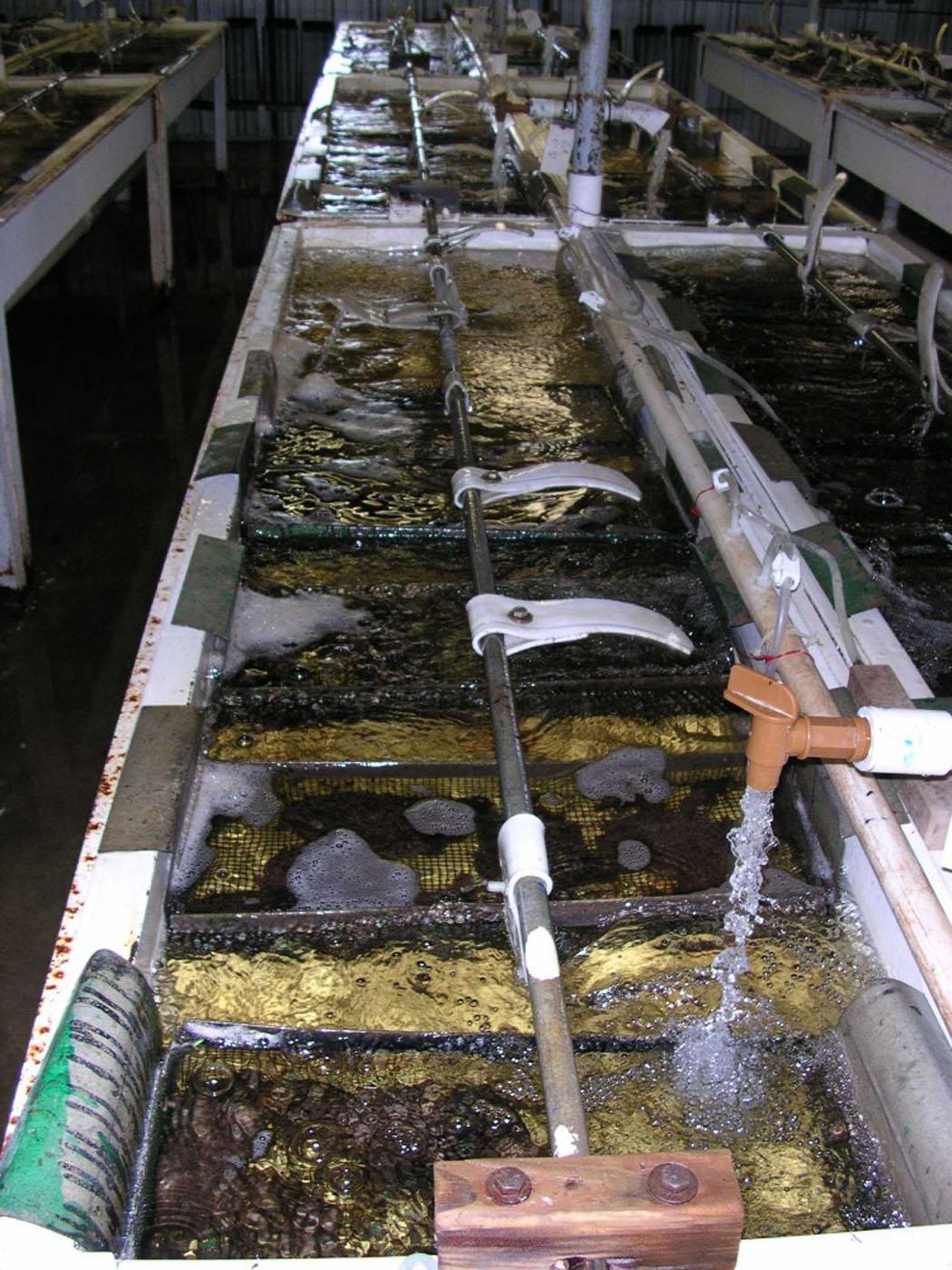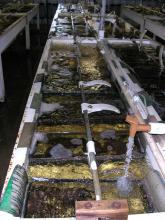Information Possibly Outdated
The information presented on this page was originally released on March 17, 2005. It may not be outdated, but please search our site for more current information. If you plan to quote or reference this information in a publication, please check with the Extension specialist or author before proceeding.
Plastic paddles improve catfish hatchery safety
MISSISSIPPI STATE -- A catfish hatchery owner with a little time on his hands developed a cheap and easy solution to a problem that nags producers.
Hatcheries typically place catfish egg masses in mesh baskets in metal troughs, and flow water over them with rotating metal paddles placed between the baskets. The paddles move water to simulate the care male fish give eggs.
Jim Steeby, aquaculture specialist with the Mississippi State University Extension Service, said this technique, while simple and effective, poses some danger to workers.
"The metal paddles rotate at 25 revolutions per minute and may scratch or cut hatchery workers as they apply egg disinfection treatments or carry out routine cleaning tasks," Steeby said. "The metal paddles also can snag clothing and hair."
Jerry Nobile, owner of Nobile Fish Farms in Moorhead, said he has had workers get scratched or clothes hung up in the machinery, and he wanted a better way to circulate water.
"One night I was up at the hatchery and I got to looking around because I had some time. I knew I had a plastic barrel and a jigsaw," Nobile said. "I realized I could cut some strips and bend them into a paddle shape, so I just started trying."
Nobile said his new paddles are simple to construct and almost free. He uses thick plastic barrels for his construction material, and cuts a 3- to 4-inch-wide strip from them. He heats one end so it can be bent back on itself, then drills a hole through the looped end. This end is placed over the spinning rod, and a bolt attaches the new paddle to the power shaft. The paddles take advantage of the curve of the barrel to move more water.
The catfish specialist said these plastic paddles offer a significant safety improvement.
"These paddles can be stopped with pressure applied by hand," Steeby said. "Friction holds them in place as they turn with the spinning pipe, but since they are only looped around the pipe and not fixed directly to it, they can be stopped by hand and not harm workers."
Nobile and his hatchery manager Wayne Wright agreed to give this information to the catfish industry without regard to patents or financial return. Nobile said the idea is so simple that once producers see the new paddle, they can construct it themselves on their own farms.
Steeby said some hatcheries have experimented with air stones to avoid the problems caused by metal paddles, but when used alone, these don't circulate water as well as paddles or put enough oxygen in the water. A few hatcheries already have adopted plastic paddles, and Steeby said he expects most in the industry eventually will switch to them.
"People will change to the plastic paddles in their hatcheries once they encounter a problem or have an injury with the traditional ones," Steeby said. "Metal paddles are a seasonal, minor safety problem, but over time I expect most producers to move away from metal paddles."




